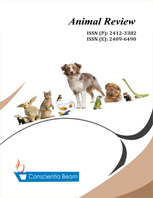Essential and Toxic Metals Determination in Imported and Fresh Beef Cattle Meat Sold in Erbil Markets
DOI:
https://doi.org/10.18488/journal.ar.2020.71.14.18Abstract
Meat of cattle (beef) constitutes a greater percentage of red meat in human diets because of its nutritive value and palatability. However, it can be contaminated with heavy metals just like other food materials. Heavy metals are very harmful due to their ability to accumulate in human body. Thus, this examination is completed to decide the heavy metals levels in frozen beef cattle meat obtained from different markets and fresh meat collected randomly from local beef cattle (Iraqi) and imported beef cattle (Brahman) at slaughterhouse in Erbil city. The result showed that the concentrations of most studied heavy metals were found to be significantly higher in imported frozen boneless beef cattle meat than those of fresh boneless meat obtained from local and imported cattle. The results also reveal that the concentrations nickel and lead metals in imported frozen cattle beef meat surpassed as far as possible set by Food and Agricultural Organization. The burden of the body with these components is extremely reliant on the concentration of the different components in main sources of animal protein, namely meat obtained from cattle. Therefore, people that consume imported beef cattle meat are probably going to be presented to higher nickel and lead concentrations and might be harmful to the health.

